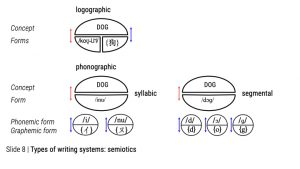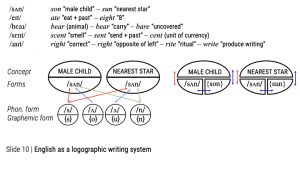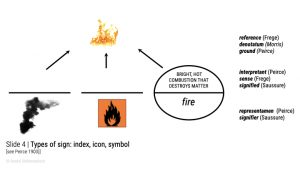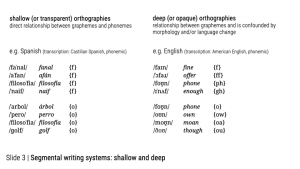Truth and meaning
One traditional approach to meaning “truth-conditional semantics”. Put simply, this approach is based on three assumptions:
- Sentences (or at least declarative sentences) have truth conditions – a set of things that must be true about the real world in order for the content of the sentence (also called the proposition) to be true.
- The meaning of a (declarative) sentence can be captured entirely in terms of its truth conditions (if we can describe the truth conditions of a sentence, we have described its meaning).
- Any part of the communicative function of a sentence that cannot be captured in terms of truth conditions is not part of its meaning in the strict sense, sometimes called “sentence meaning” (it may be part of what is sometimes called “speaker meaning”), something we will come back to in a few weeks.
Let us look at the following example:
(1) Donald Trump incited a violent mob to storm the US Capitol.
The following is an attempt to list the things that must be true about the world in order for this sentence to be true:
a. There is a person named Donald Trump (DT)
b. There is a group of people (G)
c. There is a place named the US capitol (C)
d. G is willing to use violence
e. G should not be in C
f. DT did (said) something to G
g. Because of (f), G entered C by force
h. DT knew (d)
i. DT wanted (g) to happen
The idea is that the conditions in (a-i) describe the meaning of (1). Note that is a completely different question from the question whether (1) is, in fact, true.
Now consider the sentence in (2):
(2) A violent mob was incited by Donald Trump to storm the US Capitol.
Note that it has the same truth conditions as (1) – whenever (1) is true (2) is true, and whenever (1) is false, (2) is false. In other words: (1) and (2) have the same meaning! This does not mean that they are completely identical in terms of their communicative function. For example, (1) puts the focus on the person referred to as Donald Trump, while (2) puts the focus on the group described as violent mob. But this is part of speaker meaning (putting the focus on one or the other does not change the meaning of the sentences themselves).
Uses of truth-conditional semantics
Most modern semantic theories do not assume this is a good way of describing the meaning of sentences, but truth-conditions are nevertheless an extremely useful tool for understanding relationships between propositions. Let us look at some of these relations.
Paraphrase
Grammatical paraphrase
We already saw that truth conditions can be used to show that two different grammatical structures have the same meaning: (1) and (2) differ only in that one is an active sentence and the other a passive sentence – since they have the same meaning, we can conclude that active and passive sentences are always paraphrases of each other – that these two grammatical structures have the same meaning.
This can be more formally expressed by using a so-called “truth table”. We call the proposition of the first sentence “p” and that of the second sentence “q”, and then we determine how the truth (or falsity) of paffects the truth of qand vice versa.
p: Donald Trump incited a violent mob to storm the US Capitol.
q: A violent mob was incited by Donald Trump to storm the US Capitol.
Truth tables:
(These tables are read as follows: “If [proposition in first column] is [true/false], then [proposition in second column] is [true/false]”; for example, the first row of the first table means “If p is true, q is true”).
Paraphrase (lexical)
We would get the same truth tables for the propositions of the following pair of sentences:
p: Donald Trump incited a violent mob to storm the US Capitol.
q: Donald Trump egged on a violent mob to storm the US Capitol.
These are also paraphrases of each other, in this case, because incite and egg on mean the same thing (except that one is formal an one is colloquial, but that is a difference in speaker meaning).
Paraphrase (referential)
And we would get the same truth tables for the propositions of the following pair of sentences:
p: Donald Trump incited a violent mob to storm the US Capitol.
q: The president of the USA incited a violent mob to storm the US Capitol.
In this case, the reason is not that Donald Trump and The president of the USA mean the same thing (names don’t have meaning at all), but that (at the time of writing) they refer to the same person.
Contradiction (Negation)
The opposite of paraphrase is contradiction – this is a situation where if p is true, qmust be false and vice versa –(only one of p or q can be true). The clearest case of contradiction is provided by pairs of sentences that are identical except for the fact that one of them is negated:
p: Donald Trump incited a violent mob to storm the US Capitol.
q: Donald Trump did not incite a violent mob to storm the US Capitol.
Truth tables:
Entailment
A very interesting relationship between two propositions is that of entailment – a situation where one proposition logically follows from another. Consider the following examples:
p: Donald Trump persuaded a violent mob to storm the US Capitol.
q: A violent mob planned to storm the US Capitol.
Here, if pis true, then qmust be true – to persuade someone to do something means that they plan to do it (and will do it unless someone stops them or they change their mind later). However, the two sentences are not paraphrases, because if q is true, p could be true or false – if it is true that a violent mob planned to storm the US Capitol, the reason could be that Donald Trump persuaded them, but it does not have to be. In other words, the relationship only goes on one direction (q follows from p, not the other way around).
Truth tables:
This is interesting, because the entailment is triggered by the meaning of the verb persuade – if we choose a verb like urge, which at first looks similar and might be given as a synonym in a thesaurus, the entailment disappears. Consinder:
p: Donald Trump urged a violent mob to storm the US Capitol.
q: A violent mob planned to storm the US Capitol.
Truth tables:
Negative entailment
Another relation between propositions is that of negative entailment: here, if p is true, q must be false but if p is false, q can be true or false. Consider:
p: Donald Trump persuaded a violent mob to storm the US Capitol.
q: The mob planned to stay away from the US Capitol.
If Donald Trump persuaded the violent mob to storm the Capitol, it cannot be true that the mob planned to stay away from the Capitol (this would mean that they were not persuaded). However, if Donald Trump did not persuade them, they could either plan to stay away, or they could plan to storm it for some other reason.
Truth tables:
Presupposition
Finally, the most interesting relationship between two propositions is that of presupposition. Here, qmust be true regardless of whether p is true or not. Consider:
p: The president of the USA incited a violent mob to storm the US Capitol.
q: There is a president of the USA
If the president of the USA incited a violent mob to storm the US Capitol, then there must be a president of the USA – otherwise he could not have done what is claimed. However, if the president of the USA did not incite a violent mob to storm the US Capitol, then there must also be a president of the USA – otherwise it does not make sense to talk about things he did not do. In other words: q must be true before it makes any sense to think about the truth or falsity of p; if q is false, p is meaningless.
Truth tables:
Frequent sources of presupposition
Presuppositions are triggered by all kinds of linguistic structures. Some of the most frequent ones are the following:
1. Definite descriptions
p: The president of the USA incited a violent mob to storm the US Capitol.
q: There is a president of the USA.
2. Factive verbs
p: Donald Trump regrets inciting a violent mob to storm the US Capitol.
q: Donald Trump incited a violent mob to storm the US Capitol.
3. Implicative verbs
p: Donald Trump managed to incite a violent mob to storm the US Capitol.
q: Donald Trump tried to incite a violent mob to storm the US Capitol.
4. Verbs of change and continuation
p: Donald Trump ceased/continued to incite a violent mob to storm the US Capitol.
q: Donald Trump had been inciting a violent mob to storm the US Capitol.
5. Iterative expressions
p: Donald Trump again incited a violent mob to storm the US Capitol
q: Donald Trump had incited a violent mob to storm the US Capitol at least once before.
6. Temporal clauses
p: While inciting a violent mob to storm the US Capitol, Donald Trump was hoping he could remain president of the USA
q: Donald Trump was inciting a violent mob to storm the US Capitol.






